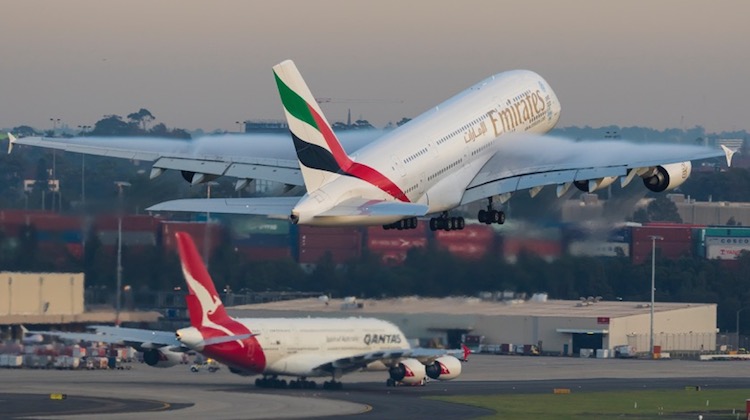
There are signs demand for air travel is softening as the stimulatory effect of lower fares eases and airline costs begin to creep upwards, new figures suggest.
The International Air Transport Association (IATA) says in a report total revenue passenger kilometres (RPK) rose 6.8 per cent in July, compared with the same month a year earlier.
The result was below the 7.7 per cent improvement in RPKs in June.
Although RPKs, a measure of passenger demand, was still expected to grow strongly in calendar 2017, IATA says the July figures indicated the “exceptionally supportive demand backdrop has moderated”.
“Industry-wide RPKs were growing at an annualised rate of more than 12 per cent coming into 2017, but this has since slowed to six per cent over the past three months,” IATA said in its report.
“This partly relates to a pause in the upward trend in global business confidence,” IATA said, noting this key measure had “broadly tracked sideways since January”.
And although airfares had come down as fuel prices dropped, IATA said this trend too was starting to reverse as “passenger yields have begun to trend upwards modestly over the past few months”.
“All told, the strong first half of the year and the robust start to the peak summer period means that 2017 is on course to be another year of above-trend RPK growth,” IATA said.
“However, the moderation in demand drivers suggests that the upward trend in H2 2017 and into 2018 is likely to be somewhat weaker than was seen in the same period in 2016.”
IATA said capacity, measured by available seat kilometres (ASK) rose 6.1 per cent in July. With demand growing faster than capacity, average load factors improved 0.6 percentage points to 84.7 per cent.
“As is evidenced by the record high load factor in July, the appetite for air travel remains very strong,” IATA director general and chief executive Alexandre de Juniac said in a statement.
“However, the stimulus effect of lower fares is softening in the face of rising cost inputs. This suggests a moderating in the supportive demand backdrop.”
Airlines around the world experienced the fastest growth in demand for more than a decade in the first half of calendar 2017, with the 7.9 per cent lift in RPKs the largest first half improvement since 2005, the IATA said recently.
All regions reported growth, with airlines in Latin America leading the way as RPK growth of 10.5 per cent outpaced ASK expansion of 10 per cent. As a consequence, load factors rose 0.4 percentage points to 84.9 per cent.
The IATA report showed the Australian domestic market declined a little in July, with airlines cutting capacity in an effort to better match demand with the number of seats in the market.
Local carriers experienced a 0.8 per cent fall in RPKS, while ASKs were down 1.9 per cent. As a consequence, load factors rose 0.9 percentage points to 80.1 per cent.
IATA said both demand and capacity in Australia had trended downwards at an annualised rate of about two per cent since the start of 2017.
Virgin Australia’s latest financial results showed it flew 5.9 per cent fewer sectors in 2016/17 and cut ASKs 0.1 per cent.
Meanwhile, Qantas said in its 2016/17 results domestic ASKs were reduced by 2.8 per cent in 2016/17, while Jetstar domestic ASKs inched 0.2 per cent higher.
Looking ahead, de Juniac said noted the positive start to the peak northern summer travel season showed demand continued to be strong.
However, he cautioned that aviation infrastructure constraints would act as a lag on growth.
“People want to travel and aviation connectivity is vital to the smooth functioning of the global economy,” de Juniac said.
“But the economic and social benefits that aviation brings need to be supported by adequate, affordable airport and air traffic management infrastructure. To do this effectively, governments must include aviation’s requirements as part of their national economic strategy.”















